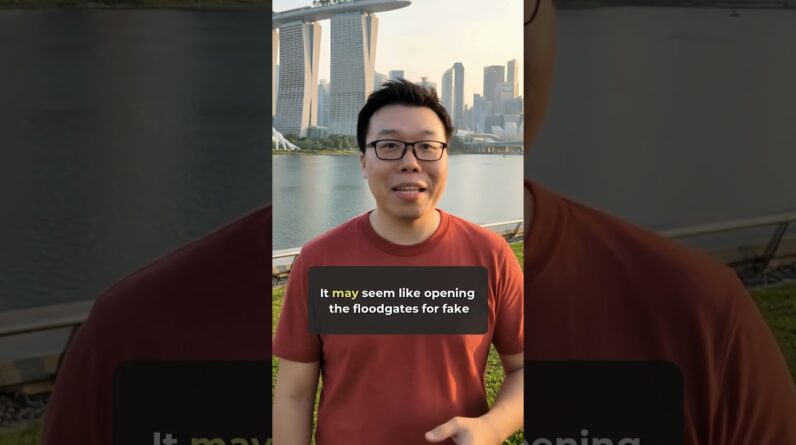
In the digital world, duplicate content issues can be a real headache. You spend time and effort creating valuable content, only to find out that search engines are penalizing you for duplicate content. But fear not, because there are effective ways to avoid or fix this problem. In this article, we will explore some strategies that will help you keep your content unique and ensure that you rise above the competition in search engine rankings. So, let’s dive in and discover how you can avoid or fix duplicate content issues and take your online presence to new heights!
Understanding Duplicate Content
Definition of duplicate content
Duplicate content refers to the presence of identical or substantially similar content on multiple webpages or domains. It can occur within a single website or across different websites.
Types of duplicate content
There are two primary types of duplicate content: internal and external. Internal duplicate content refers to identical or similar content found within the same website, often resulting from poor site architecture, multiple versions of URLs, or content syndication. On the other hand, external duplicate content is when identical or very similar content is present on different websites, which may be caused by content scraping, plagiarism, or syndication.
Why duplicate content is a problem
Duplicate content poses several challenges for website owners and can negatively impact search engine optimization (SEO) efforts. Firstly, search engines may struggle to determine which version of the content is the most relevant and valuable for users, potentially leading to lower search rankings or even exclusion from search results. Moreover, duplicate content can dilute the authority and credibility of a website, as search engines might view it as a manipulation attempt. Finally, when search engines crawl and index duplicate content, it can consume valuable crawl budget, preventing other important pages from being discovered and indexed.
Importance of Unique Content
Benefits of unique content
Creating and publishing unique content offers various benefits for website owners. Firstly, unique content helps establish your website as a reliable source of information, building trust and credibility with visitors. Additionally, it allows you to differentiate yourself from competitors and stand out in search engine results pages. Unique content also provides an opportunity to showcase your expertise, demonstrate thought leadership, and engage with your audience on a deeper level. Moreover, original content increases the likelihood of attracting natural and organic backlinks from other websites, which can enhance your website’s visibility and authority.
How unique content helps SEO
Unique content is a fundamental element of successful SEO strategies. Search engines prioritize high-quality, original content in their rankings, as it indicates relevance and value to users. By consistently creating unique content, you increase your chances of ranking higher in search results, driving organic traffic to your website. Additionally, unique content provides a solid foundation for implementing targeted keywords and optimizing meta data, which further improves search engine visibility. Furthermore, original content encourages user engagement, such as social sharing and commenting, which can contribute to higher rankings and increased visibility.
Increasing user engagement with unique content
Aside from its impact on search engine rankings, unique content plays a pivotal role in engaging your website visitors. Original and compelling content captivates users, encourages them to stay on your site longer, and potentially convert into customers or subscribers. By providing valuable and informative content, you establish yourself as a go-to resource within your industry, fostering a positive user experience. Furthermore, unique content forms the basis for effectively incorporating multimedia elements, such as images, videos, and infographics, which enhance user engagement and shareability.
Identifying Duplicate Content
Manual checking
One way to identify duplicate content is through manual inspection and comparison of your website’s pages. By closely examining the content and structure of your site, you can look for repetitions, similar phrases, or identical blocks of text. This method is especially useful for identifying internal duplicate content within your own website. However, manual checking may be time-consuming and less effective for detecting external duplicate content across multiple websites.
Using plagiarism checkers
Plagiarism checkers are valuable tools for detecting duplicate content, particularly when it comes to external duplication. These tools compare your content against a vast database of existing online content, highlighting any matches or similarities. Plagiarism checkers provide a quick and efficient way to identify potentially plagiarized or syndicated content that may be harming your website’s SEO performance. It is important to regularly check your content and take necessary actions to address any issues discovered.
Crawling tools for duplicate content detection
Utilizing crawling tools can help identify duplicate content within and across different websites. These tools examine your website’s structure, HTML markup, and content, flagging any instances of duplicate or similar content. By analyzing page titles, meta descriptions, headings, and body text, crawling tools provide a comprehensive overview of duplicate content. Additionally, crawling tools often offer features like XML sitemap analysis, canonical tag checking, and URL normalization, which further aid in duplicate content detection and resolution.
Avoiding Duplicate Content
Create original and valuable content
The most effective way to avoid duplicate content issues is by consistently creating original and valuable content. By investing time and effort into researching, writing, and curating unique content, you minimize the risk of duplication. Focus on providing fresh insights, unique perspectives, and actionable information that adds value to your target audience. This approach not only distinguishes your website from competitors but also improves user experience and encourages natural backlinking.
Implement canonical tags
Canonical tags are HTML elements that signal to search engines which version of a webpage should be treated as the primary/original one. By using canonical tags, you can consolidate duplicate versions of a page into a single, authoritative URL. This helps search engines understand the preferred version, eliminating the confusion caused by duplicate content. Implementing canonical tags is particularly useful when dealing with multiple URLs that lead to the same content, such as print-friendly versions, session IDs, or different parameters.
Use 301 redirects
For cases where duplicate content exists on different URLs, implementing 301 redirects is an effective solution. A 301 redirect permanently redirects users and search engine crawlers from a duplicate URL to the preferred/original URL. This consolidates the authority, link equity, and ranking potential of the duplicate page into the desired page. By redirecting duplicate URLs, you prevent search engines from indexing multiple versions of the same content, improving the overall SEO performance of your website.
Avoid content scraping
Content scraping refers to the unauthorized copying and republication of your original content by other websites. To prevent content scraping, you can implement various measures, such as using copyright notices, disabling right-click, or using CAPTCHAs. Additionally, regularly monitoring your content for unauthorized use and reaching out to offending websites can help mitigate the impact of content scraping. Protecting your unique content not only ensures that it remains exclusive to your website but also guards against potential SEO penalties caused by duplicate content.
Avoid URL parameters and dynamic URLs
URL parameters and dynamic URLs can generate numerous variations of the same page, leading to duplicate content issues. It is essential to configure your website’s content management system (CMS) or server to handle URL parameters properly. Implementing URL parameter handling, such as using canonical tags or setting up URL rewriting rules, helps ensure that search engines recognize the canonical version of a page and avoid indexing duplicate URLs resulting from URL parameters.
Fixing Duplicate Content Issues
Consolidating duplicate content
If you have identified internal duplicate content within your own website, consolidating it is essential. By merging similar or identical content into a single, authoritative page, you provide a clear signal to search engines about the preferred version. Additionally, consolidating duplicate content helps avoid keyword cannibalization and strengthens the overall SEO impact of your website.
Implementing proper redirects
When dealing with external duplicate content or multiple versions of a page, implementing proper redirects is crucial. By using 301 redirects, you can guide search engines and users to the correct URL, consolidating ranking signals and preventing the dilution of link equity. Proper redirects ensure that the preferred version of a page is indexed and displayed in search results, avoiding confusion and penalties associated with duplicate content.
Updating URL structures
If your website has complex or non-user-friendly URL structures that generate duplicate content, it is important to update them. Simplifying and optimizing your URLs not only aids in SEO but also helps search engines understand the hierarchy and relevance of your website’s pages. By having clear and descriptive URLs, you minimize the chances of generating unintentional duplicate content.
Resolving duplicate content caused by pagination
Pagination, such as dividing lengthy articles into multiple pages, can create duplicate content issues. To address this, using a canonical tag on each paginated page that points to the first page (rel=”canonical”) is recommended. This consolidates the ranking signals and authority into a single URL, removing any confusion caused by paginated duplicate content. Additionally, providing clear navigation and internal linking between pages can enhance user experience and prevent duplicate content problems.
Using meta robots directives
To instruct search engines on how to handle duplicate content, you can utilize meta robots directives. These directives, such as “noindex” and “nofollow,” provide instructions on whether to index or follow links on specific pages. By using appropriate meta robots directives, you can guide search engines on which content to prioritize and which to disregard. This helps avoid confusion and penalties associated with indexing and ranking duplicate content.
Duplicate Content and SEO
Negative impact on search rankings
Having duplicate content on your website can hinder your search rankings. Search engines aim to display the most relevant and trustworthy content to users, and duplicate content can confuse search algorithms, leading to lower rankings or even exclusion from search results. When search engines encounter duplicate content, they must determine which version is most deserving of visibility, which can result in a negative impact on your website’s search performance.
Impact on crawl budget
Search engines allocate a limited crawl budget to each website, determining how often and how deeply their crawlers will explore your pages. When your website has duplicate content, search engines must spend valuable crawl resources on indexing and analyzing multiple versions of the same content. This can reduce the time and effort spent on indexing other important pages on your site, potentially limiting their visibility in search results. Optimizing your website to minimize duplicate content ensures that search engine crawlers focus on the most valuable and unique aspects of your site.
Handling international duplicate content
Websites targeting international audiences may encounter duplicate content issues due to localized versions of their content. To address this, using hreflang annotations is crucial. Hreflang tags inform search engines about the language and geographical targeting of specific webpages. By implementing hreflang tags correctly, you can guide search engines to display the most relevant version of your content to users in different countries, thereby avoiding penalties associated with duplicate content and maximizing your website’s visibility in international search results.
Duplicate Content and E-Commerce
Unique product descriptions
For e-commerce websites, unique product descriptions are paramount to stand out from competitors and avoid duplicate content problems. Writing original, engaging, and informative descriptions for each product ensures that search engines can differentiate your content from others selling similar products. Unique product descriptions also enhance the user experience by providing valuable information and building trust with potential customers.
Canonical tags for similar product variations
E-commerce websites often face the challenge of offering similar products with only minor variations. To prevent duplicate content issues arising from these similar product variations, implementing canonical tags is essential. Canonical tags guide search engines to the primary product page, consolidating ranking signals and attributing authority to a single URL. This ensures that search engines understand which version of the product page is the canonical one, avoiding content duplication penalties.
Preventing duplicate content in faceted navigation
Faceted navigation, commonly found in e-commerce websites, allows users to filter products based on various attributes such as size, color, or price. However, it can generate multiple URLs with slight variations, leading to duplicate content problems. Implementing proper URL parameters, using rel=”canonical” tags, and dynamically generating meta robots directives can help mitigate these issues. By managing faceted navigation effectively, you ensure that search engines understand the canonical version of a page, preventing duplication penalties and preserving SEO performance.
Handling user-generated content
E-commerce websites that allow user-generated content, such as product reviews or comments, must be vigilant to avoid duplicate content problems. User-generated content can be duplicated across different product pages or even across multiple websites. Implementing measures such as content moderation, spam detection algorithms, and unique user identifiers can help mitigate the risk of duplicate user-generated content. Regularly monitoring and addressing any instances of duplication can ensure a positive user experience and maintain the integrity of your website’s SEO.
Implementing structured data markup
Structured data markup, such as schema.org markup, provides additional information about your e-commerce website’s content to search engines. By accurately implementing structured data markup, you enhance the visibility and presentation of your products in search results, potentially leading to higher click-through rates. Additionally, structured data markup helps search engines understand the uniqueness and relevance of your product pages, steering clear of duplicate content penalties.
Tools and Resources
Plagiarism checkers
- Copyscape
- Grammarly
- Small SEO Tools
SEO auditing tools
- SEMrush
- Moz Pro
- Ahrefs
Crawling and indexing tools
- Screaming Frog
- DeepCrawl
- Google Search Console
Content management systems (CMS) with duplicate content features
- WordPress
- Drupal
- Joomla
Monitoring and Maintenance
Regularly monitor for duplicate content
To maintain a healthy website, it is crucial to regularly monitor for any instances of duplicate content. By periodically checking your website’s pages and running plagiarism checks, you can identify and rectify any duplicate content problems promptly. Staying vigilant in this regard ensures that your website remains in compliance with search engine guidelines and that your SEO performance remains optimal.
Updating content to remain unique
As your website evolves and new content is added, it is important to continually update and refresh your existing content to maintain its uniqueness. By incorporating new insights, latest industry updates, and addressing user needs, you can ensure that your content retains its value and relevance. Regularly reviewing and updating your content also prevents it from becoming outdated, stale, or redundant, helping to maintain its competitive edge.
Evaluating crawl errors and redirects
Regularly reviewing crawl errors and redirects is crucial to maintaining a healthy website and addressing any duplicate content issues promptly. Analyzing crawl error reports and identifying pages with multiple redirect chains helps optimize crawl efficiency and search engine visibility. By resolving crawl errors and ensuring proper redirection, you minimize the chances of search engines encountering duplicate content and improve your website’s SEO performance.
Keeping up with search engine guidelines
Search engines frequently update their guidelines and algorithms, including those regarding duplicate content. It is important to stay informed and keep up to date with these changes to ensure that your website remains compliant. Regularly checking search engine webmaster guidelines and following industry-leading blogs and forums can help you adapt your strategies and practices accordingly, avoiding any potential penalties or adverse effects on your SEO efforts.
Periodic SEO audits
Performing regular SEO audits is essential for identifying and rectifying any duplicate content issues on your website. SEO audits evaluate various aspects, including content quality, on-page optimization, technical SEO, and duplicate content prevention. By conducting a thorough SEO audit, you can identify any areas that require improvement or fixing, ensuring that your website remains on the right path towards maintaining unique and valuable content.
Conclusion
Importance of addressing duplicate content
Understanding and addressing duplicate content is of utmost importance for the success of your website’s SEO. Duplicate content can negatively impact your search rankings, consume crawl resources, and dilute the credibility of your website. By prioritizing unique and valuable content creation, implementing best practices to prevent duplicate content, and promptly addressing any issues that arise, you can enhance your website’s visibility, engage users effectively, and maintain a competitive edge in search engine results.
Best practices for avoiding and fixing duplicate content issues
To avoid duplicate content issues, it is crucial to create original and valuable content, implement canonical tags, use proper redirects, avoid content scraping, and manage URL parameters effectively. Furthermore, identifying duplicate content through manual checks, plagiarism checkers, and crawling tools plays a vital role in resolving these issues promptly. By understanding the impact of duplicate content on SEO and following best practices, you can ensure that your website remains optimized for search engines and user experience.
Continuous effort for maintaining unique content
Addressing duplicate content is not a one-time task but an ongoing commitment to maintaining unique and valuable content. Regularly monitoring for duplicate content, updating existing content, evaluating crawl errors and redirects, staying informed about search engine guidelines, and conducting periodic SEO audits are crucial for keeping your website optimized and search engine-friendly. Investing time and effort into maintaining unique content ensures that your website remains authoritative, trustworthy, and competitive in the online landscape.






